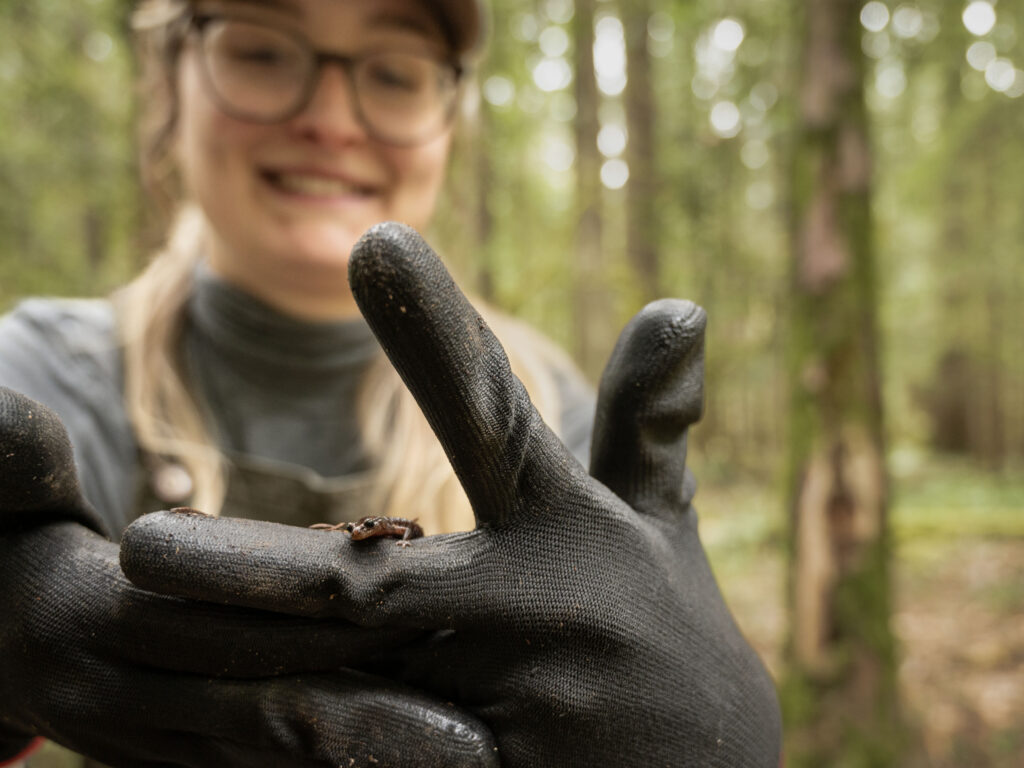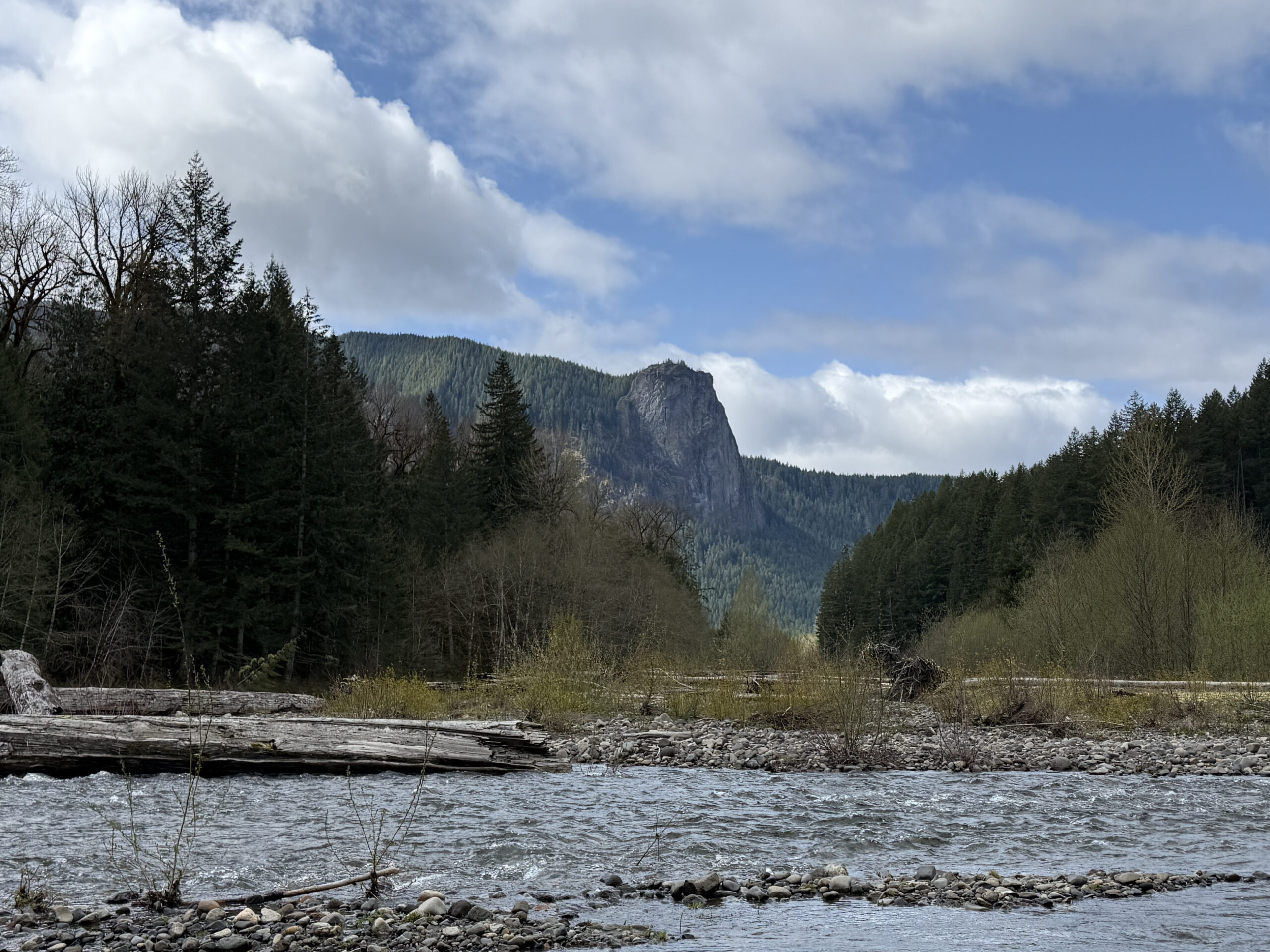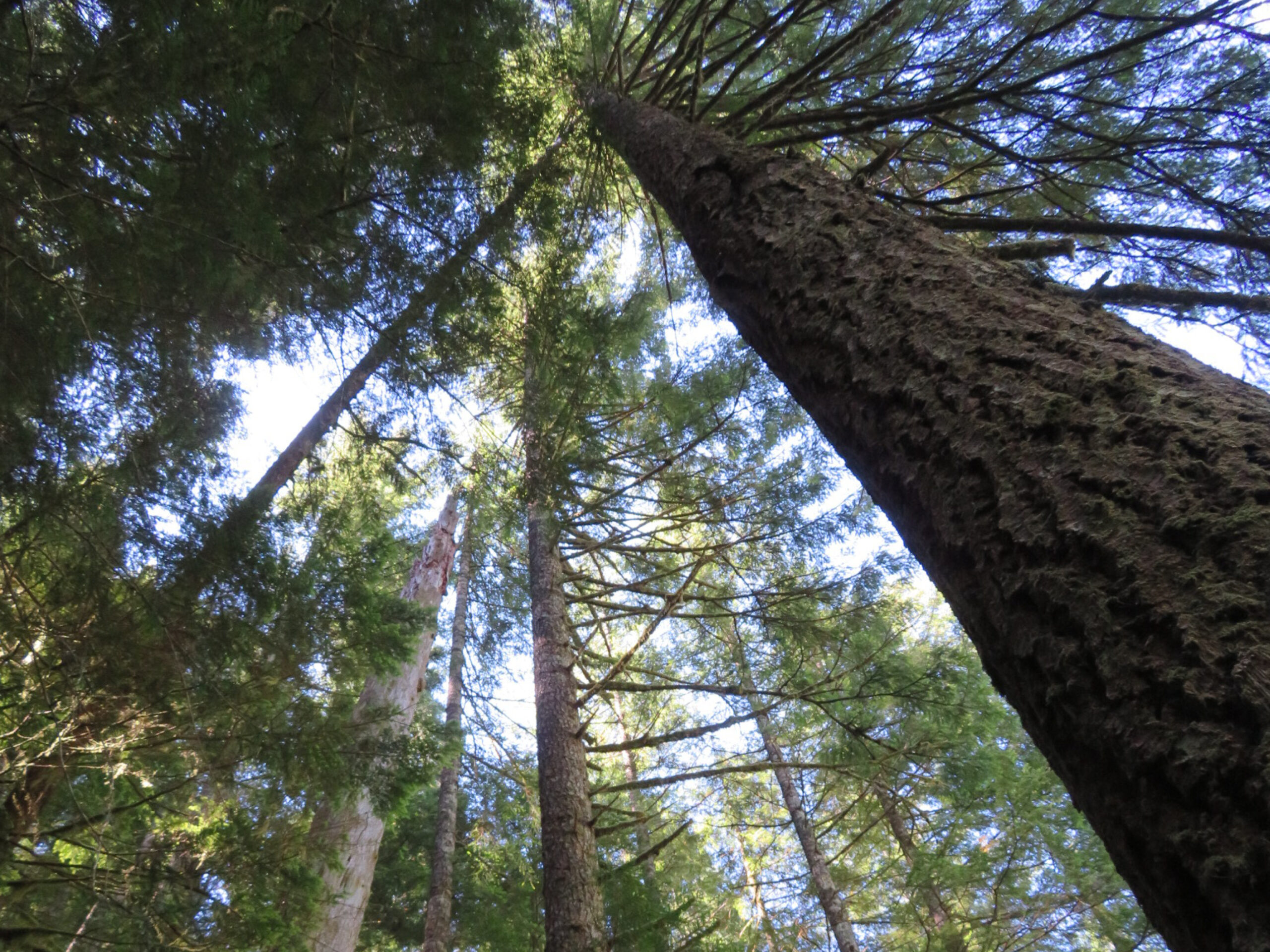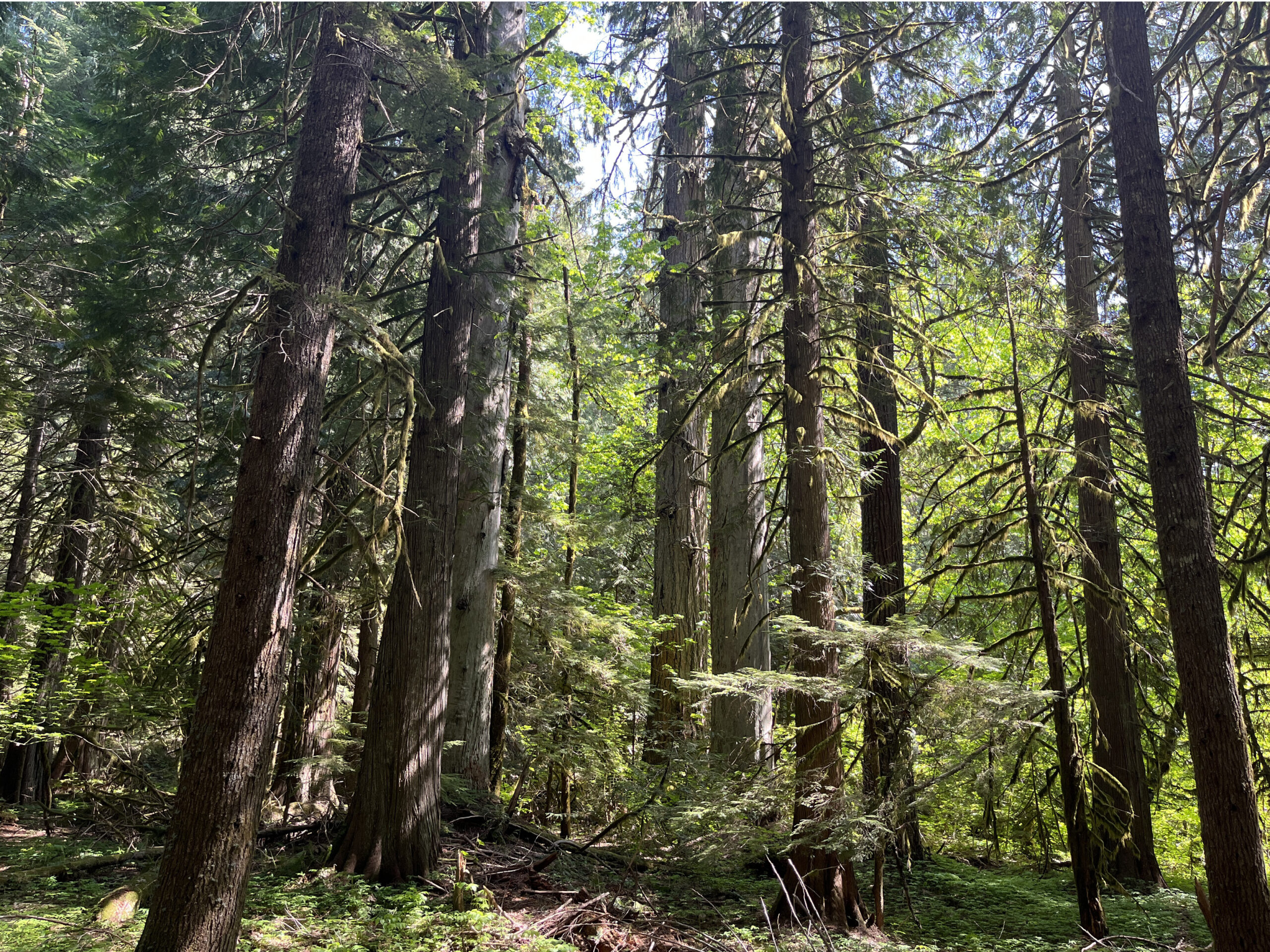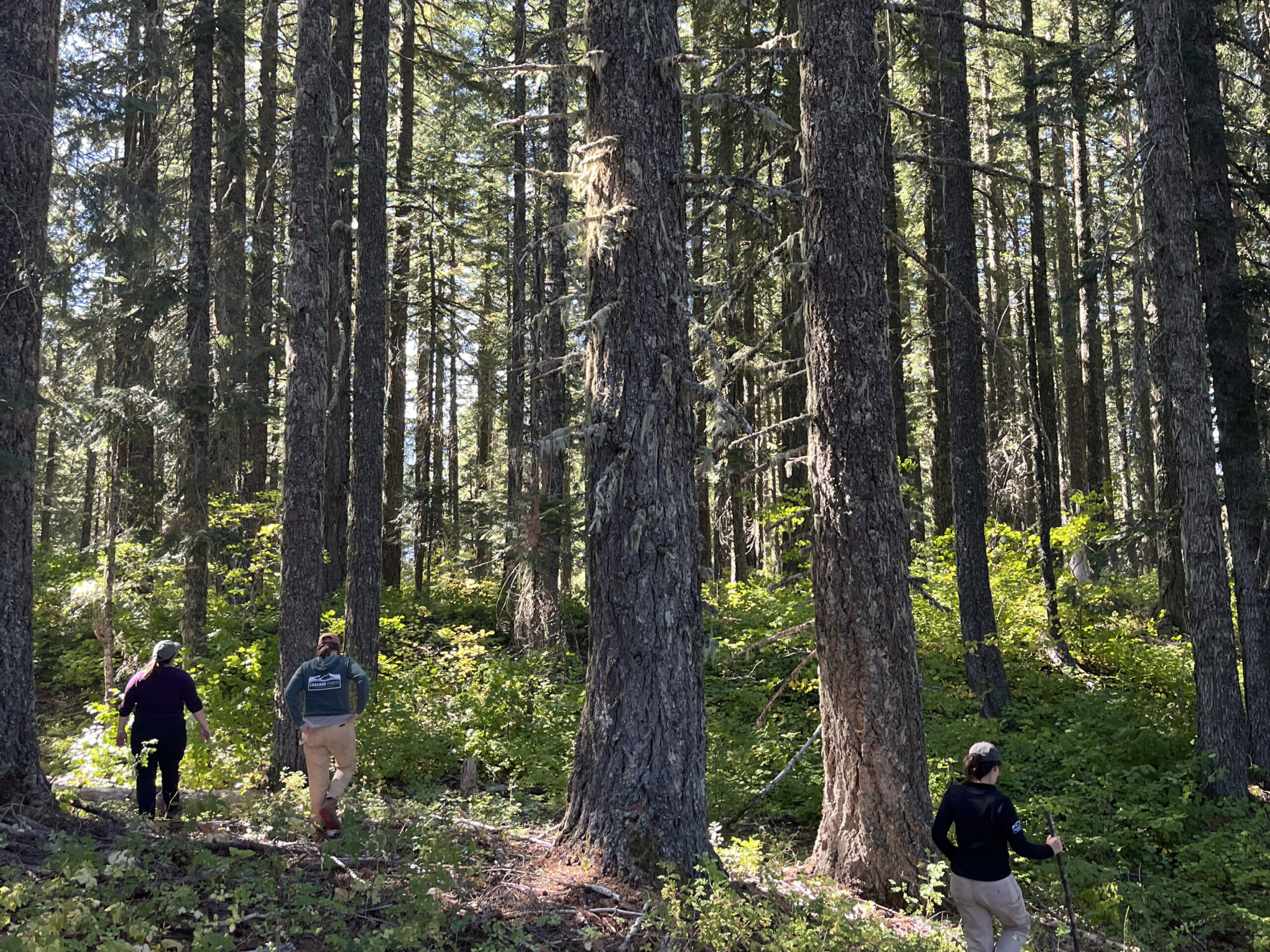Near the Cispus River, beneath towering conifers and sheer rocky cliffs, Cascade Forest Conservancy staff and volunteers spent Earth Day weekend searching under rocks and logs, in and around small creeks, for various life stages of salamanders and frogs.
The work was the first step in CFC’s new study designed to understand how the salmon habitat recovery projects planned at our two survey sites will affect amphibian populations. Here in the Cascades, a place defined for many by its majestic mountain peaks and its iconic species like salmon, Roosevelt Elk, Douglas fir, and Western redcedar, small things can be easily overlooked. Too little is known about current populations of many species of amphibians in the Pacific Northwest, but these creatures play vital roles in healthy ecosystems and understanding how they are being impacted by habitat restoration efforts is key to preserving biodiversity in our region.
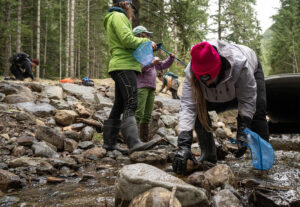
To conduct our surveys along the creeks, CFC staff and volunteers split into three teams. Two groups worked across from each other on opposite stream banks and the third worked in the stream itself. Each terrestrial team began by measuring an area 50 meters long and 10 meters back from the water’s edge into the forest, then searched for a set amount of time before measuring out a new area and beginning the process again.
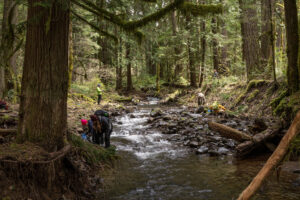
Turning over and carefully resetting the rocks and logs under which these species live meant getting low and close to the forest floor and stream bed. From these vantage points, the familiar forests look very different. The world of amphibians may be miniature, but it brims with life. The teams encountered subterranean networks of tunnels, a staggering array of mosses and fungi, and a diverse array of terrestrial and aquatic invertebrates. At the end of two days of searching, we found and documented 31 individuals from five species of amphibian; two terrestrial salamanders (ensatina and the western red-backed salamander) and three frogs (Pacific tree frog, western toad, and northern red-legged frog).
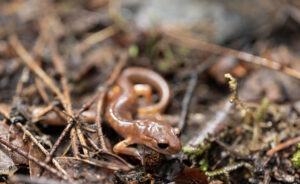
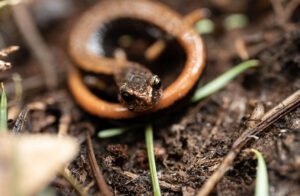
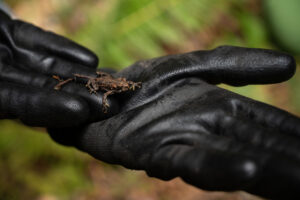
The stream team had less luck than the groups working the banks. Based on our locations and the characteristics of the waterbodies we searched, it was possible we would find egg masses or fully aquatic species like Cascade torrent salamander, Pacific giant salamander, or Cope’s giant salamander. We did not find any amphibian species in the creeks, but after the surveys, we decided to venture to the nearby Cispus River. There we found stagnant backwater channels that, lo-and-behold, had Pacific tree frog, western toad, and northern red-legged frog egg masses! This discovery reiterated the fact that these species, among others, need slow-moving water to lay eggs.
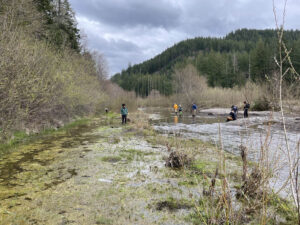
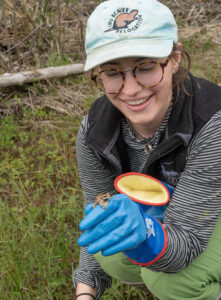
Later this year, CFC will be working to restore Camp Creek by placing more large woody debris into the stream. The lower reaches of the creek have great potential for being used as off-channel habitat for salmon. The addition of wood will create diverse salmon habitat in the form of slow-moving water for resting, cover from predators, and deposition of gravel for spawning. After our amphibian surveys, we can now hypothesize that the slow-moving water will not only benefit salmonids, but could also create more habitat for Pacific tree frogs, western toads, and northern red-legged frogs to breed since we know they are in the area. But then the question arises; if we are creating more salmon habitat and more amphibian habitat, are we just creating more food for the salmon? The impact of instream restoration on amphibian populations has not been well studied. Project partner, Julianna Hoza, with the University of Washington-Vancouver, is studying the impact of beaver dam analogs on amphibian populations, which inspired us to consider this for our upcoming studies.
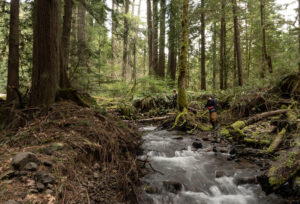
We’ll start the restoration work with the Forest Service in August of this year. Changes to the water often occur quickly, but we’ll have to wait until spring to see what fish and wildlife have moved in. In early spring of 2024, we’ll be back out at the site to see how the placement of large woody debris has shaped the stream and to see if there have been any changes to the amphibian species that are utilizing the creek and surrounding areas.


